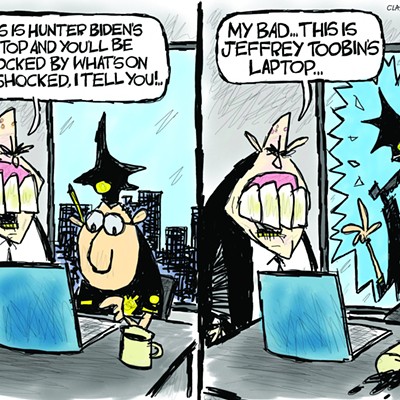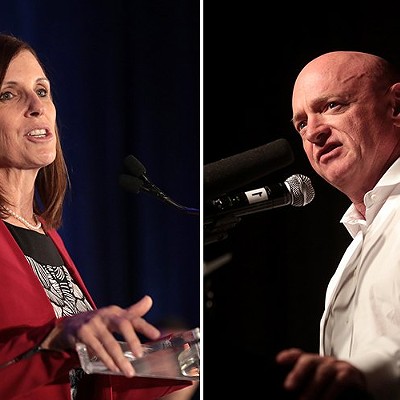The cuts were not as deep as Republican leaders first proposed--universities, for example, took a $141 million hit instead of $174 million--but they were spread wide across state government.
With just five months left in the fiscal year, Republicans passed a budget fix that trimmed $585 million in spending, swept $598 million from various state accounts and used $500 million in anticipated funding from a federal stimulus package.
The plan, passed on a party-line vote in both the House and Senate, was praised by GOP leaders as a sensible way to bring state spending under control. It was criticized by Democrats as a shortsighted hack job.
Among the big cuts in spending: $133 million from K-12 funding; $90 million from the state's welfare programs; $68 million from health-care programs; $21 million from the Department of Corrections; and $9 million from the community colleges, according to a summary from the Joint Legislative Budget Committee.
The budget fix also eliminated $22.5 million in funding for the 21st Century Fund, a program put into place by former Gov. Janet Napolitano to fund investments in medical, science and engineering programs.
Business leaders in Phoenix and Tucson were said to be particularly unhappy with that cut, which was pushed by Rep. Sam Crump of Anthem and several House Republican freshmen, including Frank Antenori and David Gowan of District 30, and David Stevens of Sierra Vista. Their insistence on trimming what they saw as corporate pork sparked a fight that led House Speaker Kirk Adams to take the extraordinary step of stripping Crump of his chairmanship of the House Government Committee earlier this week.
State lawmakers stopped short of a plan to shut down the UA's Arizona Poison and Drug Information Center--which runs a hotline to aid people who have accidentally ingested drugs or poisons--and transfer its responsibilities to a Maricopa County operation. Instead, funding for both facilities was cut in this fiscal year, and they are expected to compete against one another for state funding next year.
Republican leaders, who had pushed for swift action on the current year's budget shortfall, worked out most of the details behind closed doors before Gov. Jan Brewer called a special session of the Legislature last Wednesday, Jan. 28--the same day that thousands of university students arrived at the Capitol to protest proposed cuts.
The protest appeared to have little impact on lawmakers. Antenori, of District 30, said that the students should have stayed in class.
"I don't think it's a smart move on their part. It doesn't help," Antenori said.
Democrats offered various budget alternatives, including delaying some payments into the next fiscal year and borrowing against future lawsuit-settlement payments by tobacco companies, but they were largely ignored.
By Saturday morning, after lawmakers had restored some funding to social services at the request of Brewer, the budget deal was finalized, and Brewer was able to sign it into law before departing for Tampa Bay, Fla., to watch the Arizona Cardinals play in the Super Bowl.
In a statement to the press, Brewer thanked Republican lawmakers "for their hard work and diligence in addressing one of the most difficult budget challenges in the history of the state of Arizona. They have answered the call, and they have done the people's business."
Brewer blamed the state's budget problems on an "insatiable appetite for spending" in recent years.
State Sen. Jonathan Paton, who represents Tucson's eastside and Green Valley, said that balancing the budget was "extremely painful."
"I think that nobody on any side was very happy with it," Paton said. "I think there were some people who wanted to spend less, and there were a lot of people who wanted to spend more, and at the end of the day, it's what you would expect from trying to plug a $1.6 billion gap."
Paton said that he was able to strike a deal with Sen. Russell Pearce of Mesa, who had held up construction of UA dorms by refusing to hold a required hearing. Paton said Pearce agreed to let the projects move forward as part of the budget agreement.
"We shook on it," Paton said.
But that bit of good news for the UA was overshadowed by the $141 million in cuts to the universities, which was far above the $100 million that university leaders said they'd be able to afford.
Earlier this week, UA President Robert Shelton announced that he expected the UA's share of the cuts would amount to $57 million. That would force the university to close the Flandrau Science Center, cut the hours for the Arizona State Museum and the UA Museum of Art, and suspend outreach and extension programs across the state.
Shelton anticipated deeper cuts in the fiscal year that begins in July, because lawmakers are facing a shortfall that has been estimated at $3 billion. Lawmakers were expected to begin dealing with that budget problem this week.
The UA will continue to leave positions unfilled and force employees to take five unpaid furlough days next year, Shelton wrote in a memo to university employees.
"These actions will result in fewer class offerings, larger class sizes in the future and increased time to degree for our students," Shelton said.

















